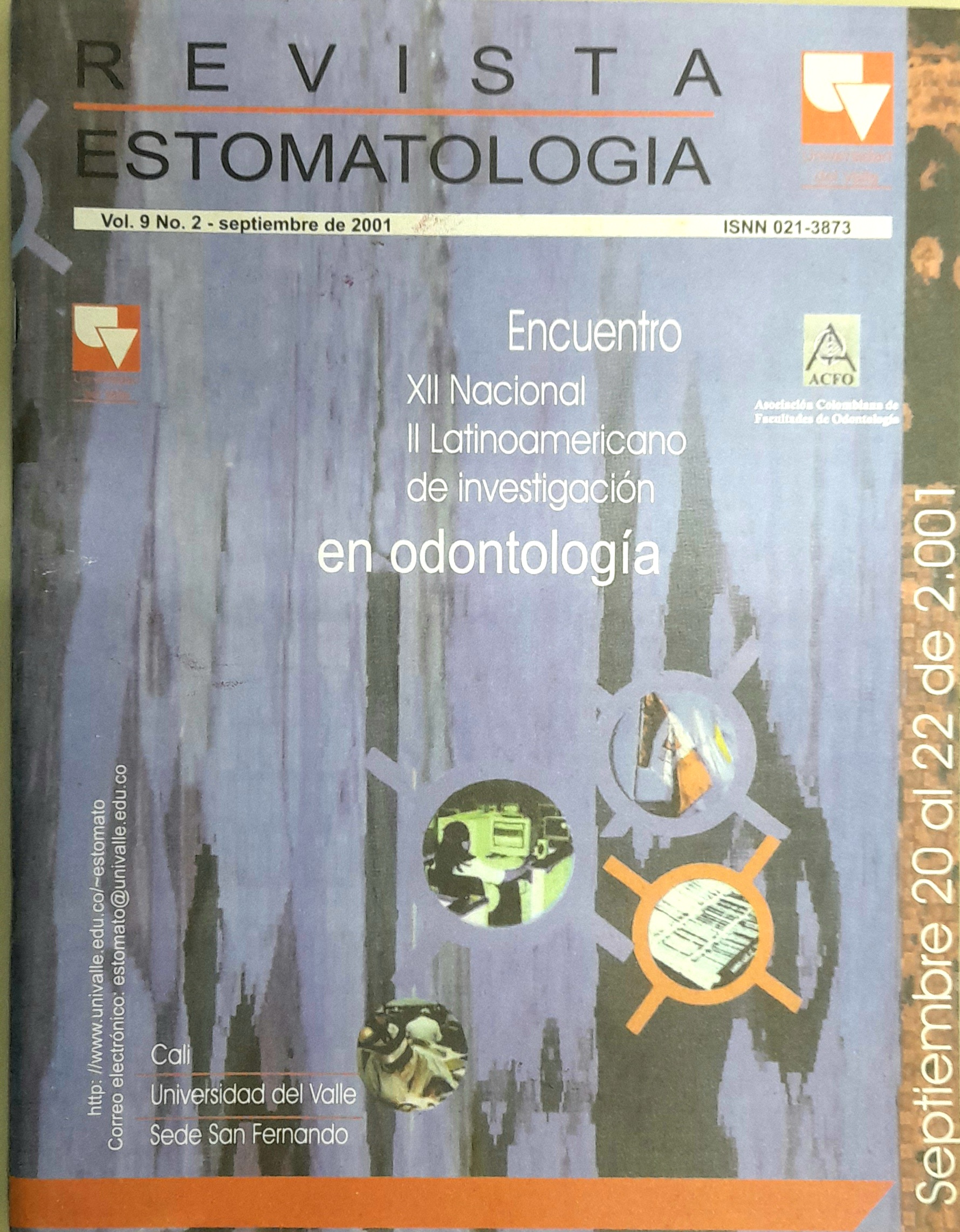Contaminación in vitro de cepillos dentales
Main Article Content
This study determined that toothbrushes could maintain viable and perhaps transmit to other farnily member 3 important oral pathogens. The toothbrushes were infected with an approximate inoculum of 5 million bacteria' s per mI of Actinobacillus actinomycetemcomitans, and Enterobacter cloacae, respectively and an infective dose 50 (ID 50) of Herpes Simplex type 1, (HSV -1). These microorganisms were placed directly on the tooth bristles at room temperature and subcultured at different times to establish individual microbial survival rates. Microorganisms were cultured at 3 hours, 24 hours, 96 hours, 5 days, 12 days, and 16 days after the initial toothbrush inoculation. A. actinomycetemcomitans, and HSV -1 resulted viable after 72 hours on toothbrushes. E. cloacae was viable as far as 16 days after the initial inoculation. The microbial viability was determined by subculture in TSBV and the identity of the microorganisms established by the bacterial colony morphology, rapid biochemical tests, and specie-specific polymerase chain reaction for A. actinomycetemcomitans. Viral viability was determined by visualization of the viral induced cytopathic effect on a cultured monolayer of embryonic lung fibroblasts from replicating HSV -l. Positive cultures were confmned by IFA assay against HSV -1. In conc1usion this study demonstrated in vitro that toothbrushes could act as a reservoir of microbes and maybe transmit important oral pathogens.
- Judy Villavicencio, Adolfo Contreras, Jesus Hernández Silva, Freddy Moreno, Half Century of creation and progress at the Dental School - Universidad del Valle, Cali - Colombia: relevant achievements in the last decade , Revista Estomatología: Vol. 27 No. 2 (2019)
- Juan Diego García Castaño, Mario Julián Gómez Palacios, Juan Pablo Rosales Mora, Adolfo Contreras, Microbiología en pericoronitis aguda de terceros molares mandibulares , Revista Estomatología: Vol. 11 No. 2 (2003)
- Adolfo Contreras, Roger Mauricio Arce, Javier Enrique Botero, Adriana Jaramillo, Contaminación bacteriana de cepillos dentales en niños y sus padres: una cuestión de educación , Revista Estomatología: Vol. 10 No. 2 (2002)
- Adolfo Contreras, Adriana Jaramillo, Freddy Moreno, Carlos Valencia, First meeting of the research groups of School of Dentistry at the Universidad del Valle “Constructing research strategies.” Opinion article , Revista Estomatología: Vol. 19 No. 2 (2011)
- Adolfo Contreras R., Miryam Astudillo, Graciela Barona, Fabio Carmona, Aristides Baraya, Efecto inhibitorio del triclosán al 0.2% y citrato de zinc al 0.02% sobre bacterias cariogénicas y periodontopatogénicas (in vitro) , Revista Estomatología: Vol. 6 No. 1 (1996)
- Myriam Astudillo, Adolfo Contreras, Diagnóstico preliminar de esterilización en 60 consultorios odontológicos de Cali , Revista Estomatología: Vol. 3 No. 1 (1993)
- Lina María Villegas, Judy Elena Villavicencio, Adolfo Contreras, Dietary intake and early childhood caries , Revista Estomatología: Vol. 26 No. 2 (2018)
- Jorge-Enrique Soto-Franco, Heberth-Fernando Aldana, Juan-Manuel Navia, Melissa Peláez, Jorge Quisoboni, María-Alexandra O'Meara, Adolfo Contreras, High sensitive- C reactive protein, periodontal parameters and periodontal microbiota after scaling-root planning plus Azithromycin as treatment of Chronic Periodontitis: A Randomized Clinical Trial , Revista Estomatología: Vol. 24 No. 2 (2016)
- Sandra Amaya, Maria F. Bolaños, Adriana Jaramillo, Jorge E. Soto, Adolfo Contreras, Estado periodontal y microbiota subgingival en mujeres preeclámpticas , Revista Estomatología: Vol. 12 No. 2 (2004)
- Eliana Cadena, Jessica Delgado, Diana Peña, Paola Sánchez, Sonia Gutiérrez, Adolfo Contreras, Adriana Jaramillo, Anilza Bonelo Contreras, Effectiveness of antibacterial dental brushes. In vitro study , Revista Estomatología: Vol. 22 No. 1 (2014)

This work is licensed under a Creative Commons Attribution-NonCommercial-NoDerivatives 4.0 International License.
Los autores/as conservan los derechos de autor y ceden a la revista el derecho de la primera publicación, con el trabajo registrado con la licencia de atribución de Creative Commons, que permite a terceros utilizar lo publicado siempre que mencionen la autoría del trabajo y a la primera publicación en esta revista.





